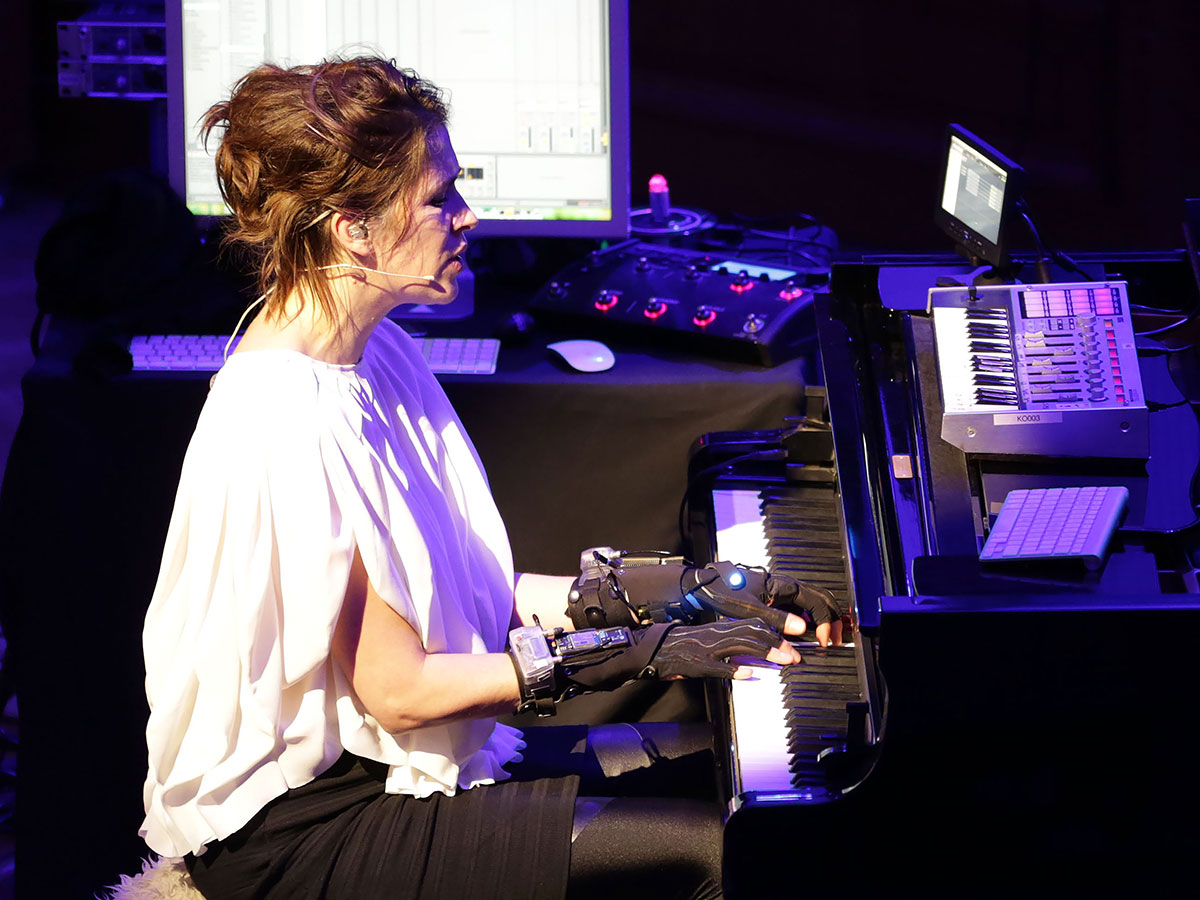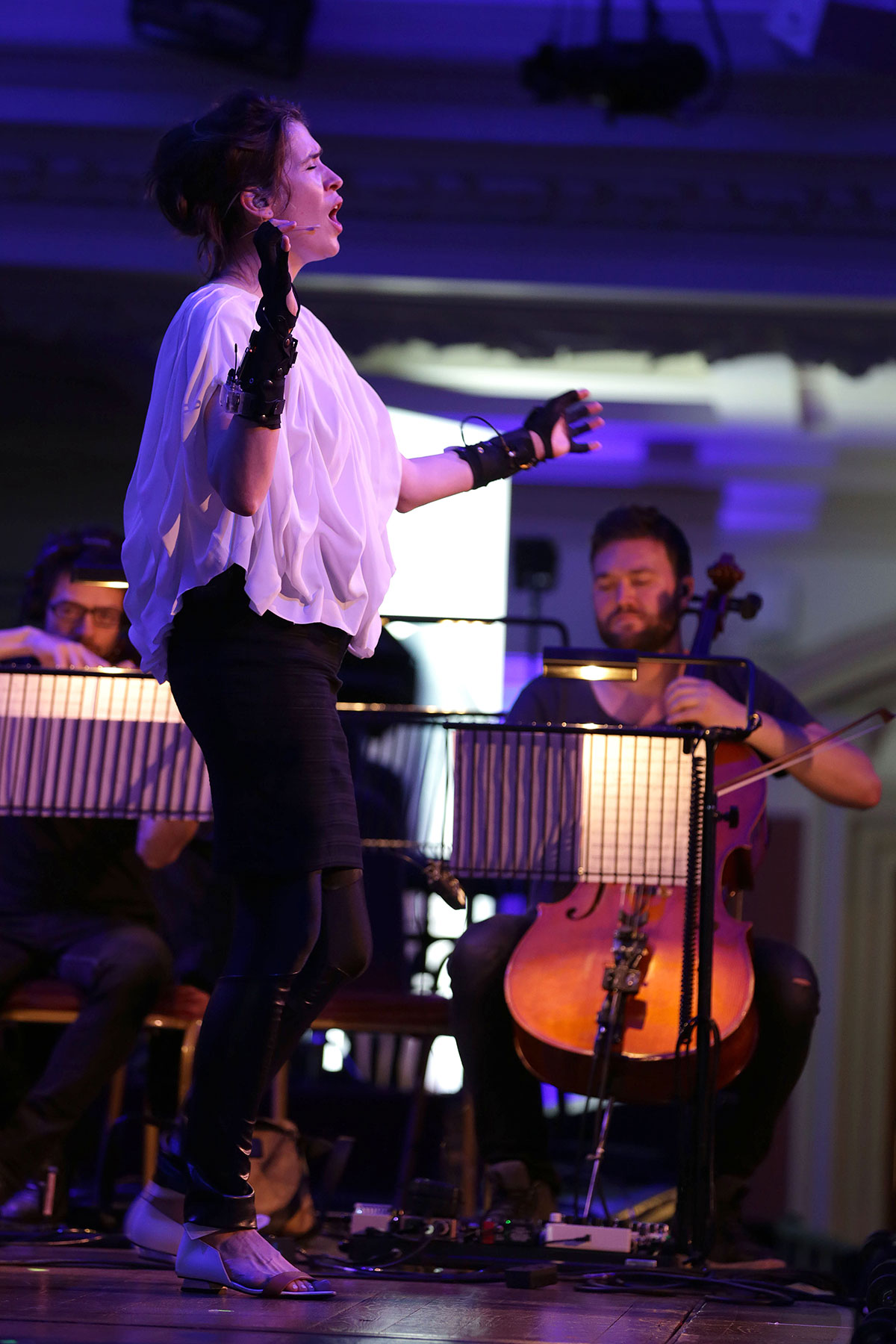
Imogen Heap’s only live date for 2015 came as part of a partnership with Sennheiser. But it was more than just a corporate gig – her set headlined an event that was designed to trigger ideas around the future of audio and how music can retain human and emotional connections amid an ever-advancing technological landscape.
Prior to her performance, Heap is brimming with ideas about the future of audio. Unlike some musicians who fight against the tide, she sees music as being utterly intertwined with technology. “Music and technology are the best dancing partners,” she says. “You can’t go far with music without technology these days… But then even the piano is an amazing piece of technology, and so music and technology have always been charging each other for the next win.”
In her home studio, Heap has both traditional and virtual instruments at her disposal as she writes, produces, mixes and engineers her records. But on stage, she’d “felt frustrated at the limitations”; cut off from the studio with its big production sound and countless tricks. “I wanted them in my hands, at the same time I was playing piano or singing,” she says — and that’s precisely what she got.
Anyone who’s seen a recent Imogen Heap live performance can’t have failed to notice her gestural Mi.Mu gloves. These 3D controllers send commands to software, adding live effects and sounds in a pleasingly organic manner. “Previously, even something as simple as adding reverb to my voice would have required moving a fader, but that’s not very exciting for the audience to watch or for me to play. It’s also distracting and can stop the flow of the performance,” she explains. “So now when I’m onstage, I have my hands on the software I love, and it feels like I’m embodying the sounds as well.”
For the glove of music

We suggest there’s also an emotional component in using the Mi.Mu gloves — on stage, they seem freeing from both technology and performance standpoints. “They boost the connection to the audience, because they can sense a connection between movements and something that happens,” she says. “It feels a bit more together, a bit more correlated, and a bit more like a dance.”
It’s possible, though, that Heap sees the Mi.Mu gloves merely as early steps in a long journey to increasingly blur the boundaries between music and technology, and she certainly has radical ideas when it comes to virtual collaborative spaces. “I’m really interested in this idea of a song being expanded, so you go in with VR stuff, pick up the bass line and stretch it, or make it faster by moving faster, playing around with the mix using your body and hands.” Her latest song, Tiny Human, has over 200 individual string recordings, and she says you could give people ‘strands’ to mix in a live context. Or musicians could find themselves “exploring worlds of songs” where you could “grab someone’s drums from another room, pull them into yours, and it would have a gravitational effect on your song”.
Virtual musicians
Heap says there “will always be an official artist mix” of any song, but loves the idea of listeners being able to “kind of tear it to pieces”. Given her fondness for organic processes and remixing, we ask Heap about the possibility of people having tracks she’s written that change, based on their circumstances.
The latest hi-fi, home cinema and tech news, reviews, buying advice and deals, direct to your inbox.
Before long, we’re talking about a world where Imogen Heap embodies herself inside an app, which would learn from her and the user. If a fan was stressed out, this digital artist would write new music, to help them relax. Generative audio, then, but reimagined as complex, unique, in-context singer-songwriter compositions — far from the plinky-plonkly pseudo-random noodling that apps of that ilk can currently muster. Somehow, we don’t think our iPhone will quite cut it. “
I get easily carried away, dreaming of future music tech, mostly when the frustrations arise today” she laughs, dragging us back to the present. But even in this simpler era, Imogen Heap never stops exploring new possibilities. “I sometimes use a Kinect box to make macro mix changes on stage, playing with the proximity to the audience as a musical axis. For this event, Sennheiser hacked what I call my ‘wrist microphones’ so I can both mic up wine glasses, bells, or anything I’m carrying on the move, same time as augmenting them with the gloves.
“I’m trying to convince Sennheiser that they should sell the ‘wrist microphones’ off the shelf, as I feel a lot of percussionists would really like them. Instead of having multiple mics set up all around them, they can just play whatever they like and it’ll be amplified.”
Coming soon: tonmeister Gregor Zielinsky explains how Sennheiser’s 3D audio will forever change how you experience recorded sound…
Find out more about Sennheiser’s new product at www.sennheiser-reshapingexcellence.com
